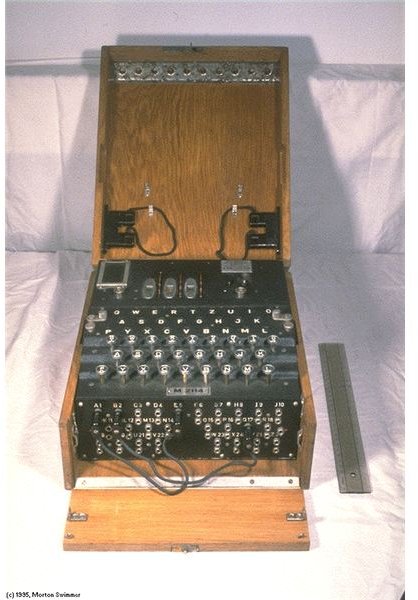Cryptography Methods
Introduction
Cryptography methods range from the simple to the complex. Simple methods of cryptography include the substitution (or Caesar’s Alphabet) method. Reciprocal methods include the Enigma machine that the Germans used in World War II. Symmetrical and Asymmetrical methods came along later and are still in use today.
Substitution Methods
The substitution method, or Caesar’s Alphabet, is exactly what its name implies. The letters of the alphabet are either slid over a certain number of spaces (for example ABC becomes DEF) or are substituted for numbers or symbols (ABC for 123 or ABC for #*%). The main problem with this method is that the cipher is easily cracked. These methods are commonly seen in the newspapers in the puzzles section, but are not used for really secure communications.
Reciprocal Methods
The reciprocal method works like this. The plaintext is inputted into a machine that creates the cryptograph. The letters are “flipped” in pairs. For example, if “C” is substituted with “L”, then any “L” in the plaintext will be substituted with “C” in the cipher. While this is more secure than plain substitution, if the cipher is entered into the same type of machine (with the same key), it will output the plaintext–without any work on the part of the person trying to read it.
Symmetric Method
Symmetric methods are also known as single key ciphers. There is one key that is used to encrypt and decrypt the plaintext. The key needs to be passed on to the recipient. Also the fact that there is one key (or in some cases the two keys are directly related to each other), the key can be broken. Two variations of this are block cipher and stream ciphers. The stream is one bit of plaintext at a time, whereas the block is a number of bits at once. An example of symmetric keys is Data Encryption Standard (DES).
Asymmetric Method
The Asymmetric method is also known as a public-key method. The key holder has two keys–a private key (which only they know) and a public key (which is uploaded to a keyserver or given to people they want to correspond with). When a person wants to encrypt a message or file, they use the Public key of the recipient to encrypt it. This ensures that only the recipient (or anyone with the private key) can read the message or file. If the sender wants to guarantee that they were the sender, they will use their private key to sign the message (and the recipient will use their public key to verify that it was sent by them). PGP and its open-source variation (Open GPG) are examples of asymmetric keys.
Final Thoughts
One more important factor is key-length. While it is not a method, it still needs to be taken into consideration. The longer the key-length means the probability of a person cracking the key increases exponentially with the increase in bits. For example, a 2-bit encryption has four possibilities, so a 128-bit has 2128 possibilities. It is important to pick the strongest method and the largest key possible.
